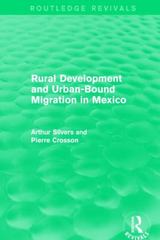Question
Hello. Could you help me with this please? The article is bellow. Thank you! A small summary of the article and an opinion and application
Hello. Could you help me with this please? The article is bellow. Thank you!
A small summary of the article and an opinion and application on of the article to a life in a few sentences.
Introduction to U.S. Economy: The Business Cycle and Growth
What Is the Business Cycle? Over time, economic activity tends to fluctuate between periods of increasing economic activity, known as economic expansions and periods of decreasing economic activity, known as recessions. Real gross domestic product(GDP)total economic output adjusted for inflationis the broadest measure of economic activity.The economy's movement through these alternating periods of growth and contraction is known as the business cycle. The business cycle has four phases: the expansion,peak, contraction, and trough.As the economy moves through the business cycle, a number of additional economic indicators tend to shift alongside GDP. During an economic expansion, economy-wide employment, incomes, industrial production, and salesall tend to increase alongside the rising real GDP. Additionally, over the course ofan economic expansion, the rate of inflation tends to increase, although the 2009-2020expansion showed that inflation can remain low while the economy is growing. During a recession, the opposite tends to occur. All of these indicators do not shift simultaneously, but they tend to shift around the same time. Although these fluctuations in economic activity are referred to as a "cycle,"the economy generally does not exhibit are gularand smooth cycle as shown in Figure 1. Predicting recessions and expansions is notoriously difficult due to the irregular pattern of the business cycle; a single quarter of economic data can be too short to predict a trend, although this was not the case with the Coronavirus Disease
Dating the Business Cycles Business cycles are dated according to the peaks and troughs of economic activity. A single business cycle is dated from peak to peak or trough to trough. NBER's Business Cycle Dating Committee is generally credited with identifying business cycles in the United States.NBER does not define a recession as two consecutive quarters of declining real GDP, which is a popular metric used by the media. Rather NBER uses a broader definition of a recession, as a period where there is a significant decline in economic activity that spreads across the economy. NBER uses a number of indicators to measure economic activity, including real GDP, economy-wide employment, real sales, and industrial production
The economy tends to experience longer periods of expansion than contraction, especially since World War II (WWII). Between 1945 and 2019, the end of the most recent business cycle, the average expansion has lasted about 65months, and the average recession has lasted about 11 months. Between the 1850's and WWII, the average expansion lasted less than half as long (about 26 months), and the average recession lasted about twice as long (about 21 months). The 2009-2020 expansion was the longest on record, at 128 months.
Short-Term Economic GrowthIn the shortterm, the business cycle is primarily driven by fluctuations in consumer spending and business investment. Over the business cycle, the rate at which the economy is expanding or contracting can be significantly different.For example, during the 2009-2020 expansion,real GDP grew at an average pace of about 2.3% per year, whereas real GDP shrank at an annual rate of5.0% in the first quarter of 2020and 31.4% in the second quarter, before growing at an annual rate of 33.1% in the third quarter. Over longer periods of time, the volatility of the business cycle fades to reveal a pattern of growth in the economy.
Potential Causes of the Business Cycle. In general, the business cycle is governed by aggregate demand (total spending) within the economy, but recessions can also be caused by sudden shocks to supply, which will impact both aggregate supply and aggregate demand.The current recession is unusual in that it displays elements of both demand and supply shocks.This section discusses these types of shocks in more detail.
Step by Step Solution
There are 3 Steps involved in it
Step: 1

Get Instant Access to Expert-Tailored Solutions
See step-by-step solutions with expert insights and AI powered tools for academic success
Step: 2

Step: 3

Ace Your Homework with AI
Get the answers you need in no time with our AI-driven, step-by-step assistance
Get Started


